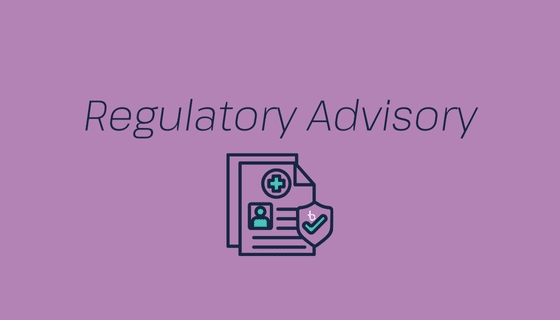
Healthcare organizations handle sensitive patient data every day, making an annual HIPAA Security Risk Assessment (SRA) not just a requirement but a priority. This vital process helps identify vulnerabilities, assess threats, and ensure compliance with federal regulations. For Chief Security and Risk Officers, the SRA is more than a checkbox—it’s a fundamental step in managing risk and protecting patient trust. If you’re preparing for 2024, understanding these requirements is essential for staying ahead.
Understanding the Importance of Annual HIPAA Security Risk Assessments
Annual HIPAA Security Risk Assessments (SRAs) are not just about ticking a compliance box—they’re the foundation for safeguarding your organization against data breaches and legal pitfalls. For healthcare decision-makers, the stakes are high: protecting patient data and maintaining trust are top priorities. Let’s break it down further.
Impact on Patient Safety and Data Security
Would you trust a hospital that can’t protect your personal information? Patients rely on healthcare providers to keep their electronic protected health information (ePHI) secure. Annual SRAs ensure that risks to data security are identified and addressed before breaches happen. These assessments reinforce the three pillars of HIPAA compliance: administrative safeguards, technical defenses, and physical security measures.
Here’s why it matters:
- Preventing data theft or leaks: An updated SRA helps uncover system vulnerabilities that could expose sensitive data.
- Improving patient trust: Patients are more likely to share complete and honest health details with providers they trust to protect their privacy.
- Strengthening operational security: Mitigating risks not only protects patients but also ensures continuous and efficient healthcare operations.
Think about it this way: performing an annual risk assessment is like a health checkup for your organization’s cybersecurity. Skipping it doesn’t just increase vulnerability—it erodes the trust your patients place in you to safeguard their most private information.
Legal and Financial Consequences of Non-Compliance
Ignoring or mishandling the SRA process isn’t just risky—it’s expensive. Healthcare organizations that fail to comply with HIPAA’s Security Rule can face hefty fines, lawsuits, and significant reputational fallout.
Here’s what’s at stake:
- Civil monetary penalties: Fines range from $100 to over $2 million per incident, depending on the level of negligence. Persistent non-compliance raises these stakes even higher.
- Criminal charges: Severe violations can lead to criminal liability, with fines and even jail time for responsible parties.
- Operational disruption: A breached system stalls operations, reducing the ability to deliver patient care effectively.
- Reputational damage: Patients and partners may lose confidence in your ability to protect their data, leading to lost business opportunities.
- Hidden costs: Beyond fines, organizations may face legal fees, remediation expenses, and long-term loss of productivity.
Non-compliance isn’t just a financial headache—it’s a leadership failure. Skipping an SRA is like driving a car without insurance; you may save time today, but a single mishap could cost you everything.
Who is Required to Complete an Annual HIPAA SRA?
Healthcare data breaches make headlines all too often, and the stakes are incredibly high. That’s where the annual HIPAA Security Risk Assessment (SRA) steps in—it’s not optional. But who exactly is responsible for completing it? Understanding the key players is crucial to ensure compliance with HIPAA’s Security Rule.
Covered Entities and Business Associates
HIPAA categorizes healthcare organizations and their partners into two main groups: covered entities and business associates. Each has specific responsibilities when it comes to safeguarding electronic protected health information (ePHI). Here’s who falls into these groups and why they’re required to conduct an SRA:
- Covered Entities These include organizations directly involved in patient care and billing. Think of entities like:
- Hospitals
- Physician practices
- Pharmacies
- Health insurance providers
- Business Associates Business associates provide services to covered entities that involve access to ePHI. These include:
- IT service providers
- Billing and coding vendors
- Third-party administrators
- Cloud storage providers
The requirement for both groups is clear: conducting SRAs isn’t about pointing fingers. It’s a joint responsibility to protect patient privacy, maintain compliance, and uphold the integrity of the healthcare system. Skipping the SRA could result in fines, audits, or worse—eroding trust with patients and partners.
SRA Requirements for Hospitals with MIPS SRA Exemption
Hospitals that qualify for the MIPS SRA exemption often wonder if they still need to conduct an annual HIPAA Security Risk Assessment (SRA). The answer is straightforward—yes. While the MIPS exemption might alter certain reporting requirements for Medicare incentives, it does not override HIPAA’s Security Rule obligations. Confusion around these requirements can lead to costly compliance errors, making a clear understanding essential for hospitals.
Understanding MIPS Exemption and HIPAA Compliance
The Merit-Based Incentive Payment System (MIPS) exemption serves as a relief from specific Medicare reporting mandates. Still, it doesn’t release organizations from broader compliance responsibilities, including the annual SRA required by HIPAA. Think of MIPS and HIPAA SRA compliance as overlapping but distinct requirements. Just because a hospital is exempt from a Medicare-specific obligation doesn’t mean it can skip its due diligence under federal laws.
Here’s how they differ:
- MIPS SRA Requirements: MIPS participants are evaluated on various metrics tied to Medicare reimbursements, including conducting an SRA to meet program rules. If exempt, this specific SRA requirement might not apply for reimbursement purposes.
- HIPAA SRA Obligations: HIPAA mandates an annual SRA for all covered entities and applicable business associates. This assessment is non-negotiable, regardless of MIPS exemptions.
Skipping the HIPAA SRA, even when a MIPS exemption applies, is a compliance risk that could lead to audits, fines, or worse. Hospitals must ensure their compliance programs reflect both sets of rules to avoid gaps.
Required Elements of the SRA
A proper HIPAA Security Risk Assessment includes several critical elements that hospitals must address. Each component targets specific risks to electronic protected health information (ePHI) and ensures vulnerabilities are identified. Missing any of these can jeopardize your organization’s compliance.
Here’s what belongs in an SRA:
- Asset Inventory Catalog all systems, devices, and software handling ePHI. This creates a detailed map of what you’re protecting.
- Threat Assessment Identify threats like malware, phishing, or internal misuse. Consider both technical and human factors.
- Vulnerability Analysis Pinpoint weak spots in systems, processes, and technology, such as outdated software or unsecured devices.
- Risk Evaluation Combine the likelihood of threats with the potential impact to prioritize areas needing immediate attention.
- Action Plan Define specific steps to mitigate risks, including timelines and assigned responsibilities.
- Policy Review Ensure your internal policies and procedures are regularly updated with HIPAA regulations.
- Documentation of Findings Document every process step, including identified risks and action plans, for accountability and audit purposes.
Documentation and Reporting Standards for SRA
When it comes to compliance, documentation is your best defense. An incomplete or poorly documented risk assessment can be as damaging as skipping it altogether. HIPAA requires healthcare entities to demonstrate not just that an SRA was performed, but that the process was thorough and findings were addressed.
Here’s how hospitals can ensure their documentation meets the necessary standards:
- Keep Detailed Records: Include every step of the SRA process, from identifying assets to implementing mitigation plans.
- Regular Updates: Update the SRA documentation when changes occur, like adopting new technologies or expanding services.
- Internal Reporting: Share findings with key stakeholders, including IT teams, compliance officers, and leadership. Transparency ensures alignment across departments.
- External Reporting: Be prepared to show SRA documentation during audits or in response to data breaches. Detailed records can mitigate penalties.
Key Dates for SRA Submission
The absolute deadline for completing your annual SRA is December 31st of each calendar year. This deadline ensures that your organization adheres to HIPAA’s Security Rule, which mandates an annual review of your systems, policies, and potential risks to electronically protected health information (ePHI).
However, many organizations don’t wait until the last minute. Here’s why it makes sense to plan ahead:
- End-of-year crunch: December is notoriously busy for healthcare teams. Waiting until the final weeks can lead to rushed assessments and missed details.
- Fiscal year considerations: For some organizations, the fiscal year doesn’t align with the calendar year. If that’s the case, linking your SRA timeline to your fiscal closing can streamline budget planning and resource allocation.
Set your internal deadline well before December 31st to ensure a smooth process. Many companies opt for early Q4 so they have time to address any identified vulnerabilities before the year ends.
What happens if you miss the deadline? HIPAA compliance operates on a “calendar year” basis, so missing it could result in penalties or issues if an audit is triggered. Think of this deadline as the guardrail that keeps your compliance efforts on track—avoiding it isn’t worth the risk.
Understanding the timeline for the annual HIPAA Security Risk Assessment (SRA) is essential for keeping your organization compliant with federal guidelines. Missing the mark on deadlines can lead to legal risks, financial penalties, and loss of patient trust. With a clear timeline, you’ll be in a better position to meet the compliance requirements without scrambling at the last minute.
Repurposing on LinkedIn
Post 1: Why Annual HIPAA SRAs Matter
The one compliance step you can’t afford to skip this year:
Your annual HIPAA Security Risk Assessment (SRA)
Healthcare organizations handle sensitive patient data every day, making an annual HIPAA Security Risk Assessment (SRA) not just a requirement but a priority. This vital process helps identify vulnerabilities, assess threats, and ensure compliance with federal regulations.
For Chief Security and Risk Officers, the SRA is more than a checkbox—it’s a fundamental step in managing risk and protecting patient trust.
🔑 Key Takeaway: Performing an annual risk assessment is like a health checkup for your organization’s cybersecurity. Skipping it erodes patient trust and increases vulnerability.
Post 2: Patient Data = Patient Trust
Patient trust isn’t just earned in the exam room—it starts with data security.
Would you trust a hospital that can’t protect your personal information? Patients rely on healthcare providers to keep their electronic protected health information (ePHI) secure.
Annual HIPAA Security Risk Assessments (SRAs) reinforce the three pillars of HIPAA compliance:
- Administrative safeguards
- Technical defenses
- Physical security measures
Here’s why SRAs matter:
✅ They prevent data theft or leaks by uncovering vulnerabilities.
✅ They strengthen patient trust by ensuring privacy.
✅ They protect healthcare operations from costly disruptions.
A well-executed SRA keeps your organization secure, compliant, and trustworthy.
Post 3: The Cost of Non-Compliance
A single oversight could cost your organization everything.
Ignoring or mishandling your annual HIPAA Security Risk Assessment (SRA) comes at a steep cost:
💰 Civil monetary penalties ranging from $100 to over $2 million.
💻 Operational disruptions that reduce patient care efficiency.
🔎 Reputational damage that erodes patient and partner trust.
Non-compliance isn’t just a financial issue—it’s a leadership failure. Skipping an SRA is like driving without insurance. A single mishap could cost your organization everything.
Plan ahead to protect your patients, your organization, and your reputation.
Post 4: SRA Deadlines Are Closer Than You Think
The clock is ticking—are you ready for December 31st?
The HIPAA Security Rule requires healthcare organizations to complete their annual Security Risk Assessment (SRA) by December 31st.
Why plan ahead?
🚩 The end-of-year crunch can lead to rushed assessments and missed vulnerabilities.
📅 Setting internal deadlines early (e.g., early Q4) gives your team time to address any gaps.
🔒 Staying compliant safeguards patient data and builds trust.
Missing the deadline risks penalties, legal complications, and patient trust.
Contact Blackwell today if you need to complete your assessment before the end of 2024 or if you want to get a head start on 2025!













